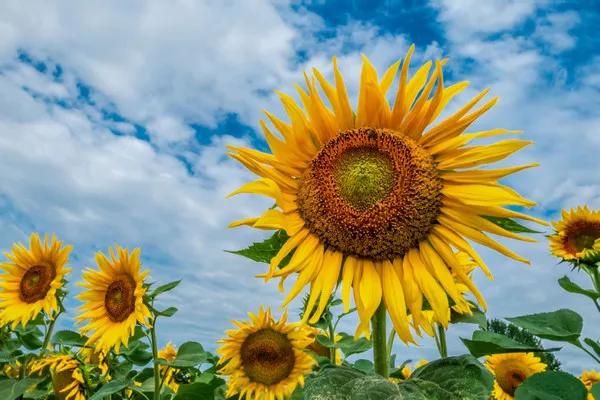In the realm of pollination, mason bees stand out as efficient and effective workers, playing a vital role in the pollination of various plants and crops. Unlike honeybees, which live in hives, mason bees are solitary insects that nest in cavities such as hollow stems, holes in wood, or even man-made structures like bee houses. To attract and support mason bees in your garden or orchard, it’s essential to provide them with a diverse array of flowering plants that offer both nectar and pollen. In this article, we explore the top 10 plants that mason bees love, highlighting their unique characteristics and benefits.
10 Best Plants for Mason Bees
1. Blueberry (Vaccinium spp.)
Blueberries are a favorite among mason bees, thanks to their abundant nectar and pollen-rich flowers. These shrubs produce clusters of small, bell-shaped blossoms in spring, attracting mason bees in search of food. Planting a variety of blueberry cultivars ensures a prolonged bloom period, providing mason bees with a continuous food source throughout the season.
2. Raspberry and Blackberry (Rubus spp.)
Raspberry and blackberry plants are excellent choices for attracting mason bees to your garden. Their bramble-like growth habit produces an abundance of white or pink flowers that mason bees find irresistible. These plants also offer nutritious berries later in the season, providing mason bees with sustenance beyond the bloom period.
3. Apple (Malus domestica)
Apple trees are not only a staple in orchards but also a magnet for mason bees. Their fragrant blossoms, ranging from white to pink in color, provide a rich source of nectar and pollen for hungry bees. Planting a mix of early, mid-season, and late-blooming apple varieties ensures a steady supply of food for mason bees throughout the spring.
4. Cherry (Prunus spp.)
Cherry trees are prized for their showy spring blooms and delicious fruit, making them a favorite of mason bees. The delicate white or pink flowers of cherry trees attract mason bees in large numbers, ensuring thorough pollination of the blossoms. Planting a mix of sweet and sour cherry varieties extends the bloom period and increases the diversity of pollen available to mason bees.
5. Pear (Pyrus spp.)
Pears are another fruit tree that mason bees find irresistible. Their fragrant white blossoms, often tinged with pink, provide a rich source of nectar and pollen for hungry bees. Planting a mix of pear varieties with staggered bloom times ensures a continuous food supply for mason bees throughout the spring and early summer.
6. Willow (Salix spp.)
Willow trees are valued for their early spring blooms and high pollen content, making them a favorite of mason bees. The fluffy catkins of willow trees provide an excellent source of protein-rich pollen for emerging mason bee larvae. Planting a mix of native willow species ensures a diverse food source for mason bees and other pollinators.
7. Crabapple (Malus spp.)
Crabapple trees are prized for their ornamental value and prolific spring blooms, making them a popular choice for attracting mason bees. The fragrant blossoms of crabapple trees provide abundant nectar and pollen for hungry bees, ensuring thorough pollination of the flowers. Planting a mix of crabapple cultivars with different flower colors and bloom times enhances the diversity of pollen available to mason bees.
8. Plum (Prunus spp.)
Plum trees are valued for their early spring blooms and delicious fruit, making them a favorite of mason bees. The delicate white or pink blossoms of plum trees attract mason bees in large numbers, ensuring thorough pollination of the flowers. Planting a mix of plum varieties with staggered bloom times extends the flowering period and provides a continuous food source for mason bees.
9. Redbud (Cercis spp.)
Redbud trees are prized for their vibrant spring blooms and heart-shaped leaves, making them an attractive choice for gardens and landscapes. The pink or purple flowers of redbud trees provide a rich source of nectar and pollen for hungry mason bees. Planting redbud trees alongside other flowering plants enhances the diversity of food available to mason bees and other pollinators.
10. Highbush Cranberry (Viburnum trilobum)
Highbush cranberry is a native shrub valued for its showy white flowers and edible red berries. The creamy white blossoms of highbush cranberry provide a rich source of nectar for mason bees, while the nutritious berries attract a variety of wildlife. Planting highbush cranberry in hedgerows or as a border plant provides habitat for mason bees and enhances biodiversity in the garden.
Conclusion:
In conclusion, selecting the right plants is essential for attracting and supporting mason bees in your garden or orchard. By planting a diverse array of flowering trees, shrubs, and perennials that provide nectar and pollen throughout the growing season, you can create a bee-friendly habitat that benefits both mason bees and other pollinators. Whether you have a small backyard garden or a sprawling orchard, incorporating these 10 plants into your landscape design can help enhance biodiversity, improve crop yields, and support the essential work of mason bees in pollinating our food crops and native plants.
You Might Be Interested In:



























